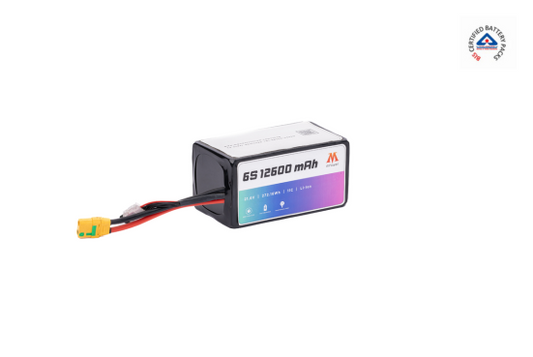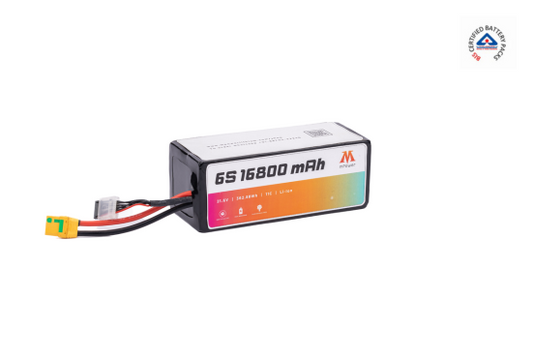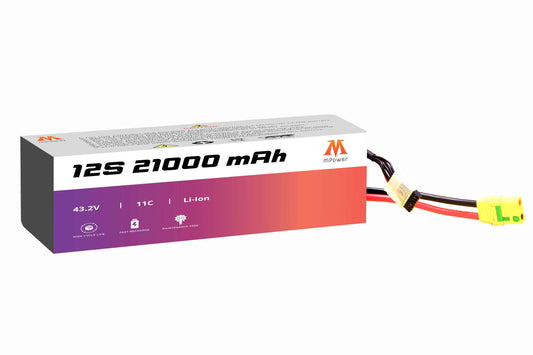
When disasters strike or defence missions unfold, people often notice the drones flying overhead. What they don’t see is the hidden backbone that keeps those drones in the air—the batteries. For a long time, people didn’t think much about drone batteries. They just swapped them out when they died. No big deal.
But now drones are doing serious stuff—flying medicine to remote places, scanning wreckage after storms, watching over borders. Suddenly, keeping them powered isn’t just a tech issue. It’s a big deal. In these situations, ordinary batteries fall short. The solution lies in smart drone batteries—energy systems that do far more than just store electricity. They bring intelligence, stability, and trust to missions where mistakes are costly.
Why Reliability Can’t Be Compromised
Think back to a cyclone in a coastal town. Roads are gone, communication lines are down, and the only way to understand what’s happening on the ground is from above. A drone lifts off, carrying emergency medical packs. Halfway through, its battery dies without warning, forcing a crash into floodwaters. That one failure could mean hours of delay and lives put at risk.
The same holds true in defence. Imagine surveillance along a mountainous border. Troops are depending on aerial eyes. A sudden power cut means losing not just visibility, but also control over valuable data. In these environments, drone smart batteries are not a luxury; they’re a necessity. They guarantee longer, more predictable flights and feed back real-time information, giving teams on the ground confidence their equipment will not let them down.
What Sets These Batteries Apart
mPower’s smart batteries, built on its BMoS platform, were created with exactly these conditions in mind. Instead of acting like silent blocks of stored energy, they think and adapt. No cut-off flights mean the drone stays in the air until its mission is complete. GPS tracking ensures that if a battery is lost in the field, it can still be located. Live monitoring provides a window into every detail—charge levels, temperature, even the health of each cell.
There’s also passive cell balancing, something most conventional batteries lack. It quietly ensures that each cell within the battery carries its share of the load, extending overall life. And with IoT connectivity, operators don’t need to stand next to the drone to know what’s happening. They can pull up battery status from any connected device, whether in a command tent or hundreds of kilometres away.
Available in multiple configurations—12S 30Ah, 14S 30Ah, and 18S 30Ah—these smart batteries are designed to fit a variety of UAV platforms, from smaller relief drones to heavier defence-grade aircraft.
Disaster Relief: Extending the Reach of Aid
In disaster management, time is cruel. Survivors may be stranded without food, water, or medicine. Relief agencies need a way to cover vast areas quickly, and drones are often their first choice. But long flight times mean nothing if power is unreliable.
This is where smart drone batteries in India are beginning to make a visible difference. Flood-relief drones, for example, can now fly over longer distances without interruption. Rescue teams can rely on aerial images that stream continuously, instead of worrying about sudden blackouts. Even something as simple as checking the ambient temperature before take-off reduces risks. When the weather is unpredictable, that foresight matters.
For humanitarian groups, choosing to buy smart drone battery systems is not about owning the latest technology—it’s about ensuring that every launch delivers results, without unpleasant surprises.
Defence Operations: Smarter Power for Complex Missions
Military drones carry a heavier responsibility. They provide surveillance where human eyes cannot reach, often under hostile conditions. The endurance of these missions depends on more than extended capacity. Operators need to understand exactly how the power system is behaving.
That’s where smart batteries for defence drones show their true worth. With live monitoring, flight logs, and usage graphs, commanders can plan and review missions with accuracy. Preventive maintenance alerts reduce downtime, ensuring fleets are ready whenever called upon. Defence UAVs also benefit from the ability to track depth of discharge and cycle usage. This avoids pushing batteries past their safe limits, which in turn prevents mid-mission risks.
The combination of intelligence and durability means these drones don’t just stay airborne longer—they deliver a higher level of trust in environments where mistakes can cost lives or compromise national security.
Long-Term Value Beyond the Mission
It’s easy to focus on endurance and monitoring, but there’s another factor often overlooked: cost. Traditional drone batteries tend to degrade quickly. Replacing them regularly isn’t just expensive—it’s disruptive to operations. Smart systems reduce that burden. By balancing cells evenly, they prevent premature ageing. For relief agencies, this means more resources are spent on aid, not logistics. For defence, it translates to fewer replacements and greater fleet readiness.
In essence, smart energy systems aren’t just about keeping drones in the air today. They’re about ensuring drones remain viable tomorrow, without draining budgets unnecessarily.
IoT as a Force Multiplier
Connectivity has reshaped how operators handle UAVs. A decade ago, batteries were passive components. Today, IoT integration turns them into active partners. Command centres can watch over dozens of drones in real time, pulling data on charging rates, voltages, or temperature fluctuations. If one unit shows unusual behaviour, it can be pulled from rotation before failure occurs.
For large-scale operations, this makes an enormous difference. Relief coordinators can prioritise which drones carry heavier loads, while defence commanders can schedule missions with full awareness of their fleet’s health. This foresight creates an advantage that simple endurance numbers could never provide.
Why mPower Stands Out
At mPower, the focus has always been on solving real-world problems. Our smart drone batteries are not designed in isolation; they’re tested against the very scenarios they’re meant to serve. Relief agencies depend on them to reach flood-affected families. Defence units rely on us for secure surveillance over rugged terrains.
For organisations looking to buy smart drone battery solutions, we offer more than specifications on paper.
Looking Forward
Drones are no longer optional in disaster relief or defence. They’ve become frontline tools, saving time, lives, and resources. As their role grows, the demand for dependable energy will only increase. Ordinary batteries cannot keep pace with this shift.
The future belongs to intelligent systems—drone smart batteries that not only provide power but also adapt, monitor, and inform. They extend mission times, protect critical data, and give operators the assurance that they are in control, even when conditions are not.
When the difference between success and failure is measured in minutes, smart energy is the only way forward. With smart batteries for defence drones and relief operations leading the charge, UAVs will continue to redefine what is possible from the skies.
Select your drone batteries from mPower now.












